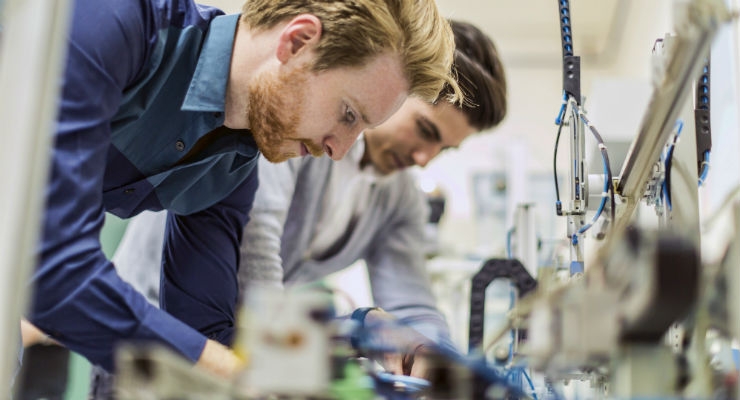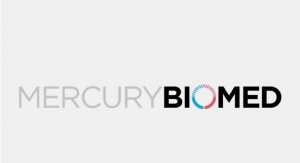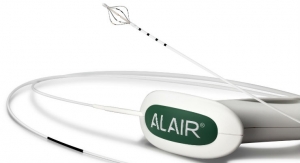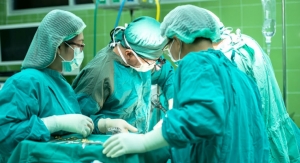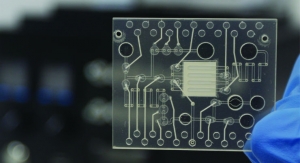There are two main types of value engineering. Most professionals are familiar with process value engineering. If your company is on a Lean journey, you already know how removing waste from manufacturing processes can boost efficiency and lower costs.
Similarly, product value engineering (PVE) addresses waste, but does so through design instead of process. Since process value engineering is largely addressed in Lean methodology, the focus here is product value engineering, a highly-evolved practice that many organizations are just now learning to exploit.
Product value engineering involves altering the design of a product to achieve a desired set of features and functions at the lowest total cost and utilizing the fewest possible parts. In practice, this effort optimizes technology and sourcing methods in order to unlock value that is trapped in inefficient design. Far more than just making parts cheaper, PVE activities are focused on delivering more with less—more features, more benefits, and higher quality—for the same or lower cost.
Cost should not be the sole driver of PVE, though. Preferably, PVE should be a technical effort driven by a product development team, not by financial analysts aiming to increase margins. Only the engineers in a company can spot inefficiency in design and come up with a creative solution, so it’s critical that value engineering efforts are driven from a technical perspective.
It’s also important to realize that value engineering is a continuous process; products are optimized constantly during their lifecycle as both the scale of production and needs of customers change over time. A product design optimized for manufacturing a few hundred pieces a year will not deliver its highest value at a significantly higher volume output.
Unfortunately, PVE continues to carry a stigma in many organizations. Myths about the true intentions and outcomes of value engineering efforts are alive and well, such as:
- Value engineering substitutes high quality with lower quality.
- It necessitates the use of cheap parts and overseas suppliers.
- It’s just about the bottom line.
- It takes a product that already works well and breaks it.
- The customer is on the losing end.
While it’s true some companies take advantage of PVE purely to cut costs, those that take it to the extreme have lost customer focus. World-class companies understand that value engineering is a springboard to increase revenue, quality, and long-term value to customers and shareholders. Executed properly, value engineering is always about a better product that offers the customer more value, not the other way around.
In the medical device space, value engineering efforts are often the byproduct of constraints of the project management triangle. In any project process, companies are only able to outperform on one or two of the three constraints: cost, quality, or time to market. You can design quickly and to a high quality standard, but it won’t be cheap. Or, you can design quickly and cheaply, but it won’t be of high quality, and so on.
Quality in medical products is not really negotiable, and in the hyper-competitive medical instrument space, time to market usually follows a close second behind quality. This often leaves the standard cost of a product lowest on the priority list, especially if it’s not a large part of the revenue model.
Therefore, many commercially released products are significantly overpriced and often over-designed for their purpose. And many firms keep delivering them that way for years, eating away at margins and cash flow every day of production.
Consider an executive level view of a medical device from the lens of the supply chain. It’s easy to see why so many companies now incorporate Lean manufacturing, targeting improved efficiency in each function of supply (purchasing, transportation, etc.) to save costs.
But with product specifications and thus, the majority of costs “locked in” when core technologies and suppliers for a design are selected, supply chain professionals are often frustrated in their efforts to maintain or increase profit margins. In order to maintain a competitive supply chain, they are often relegated to just “trimming around the edges” of the total cost of a product, since core design cannot be touched.
If the entire value chain of a product is included—the extended supply chain and the technology chain—it’s easier to perceive where PVE can play an important role in addressing inefficiency. Value should be considered part of the design, especially now with the added pricing pressures of the Affordable Care Act. Although it’s often delayed, PVE provides its best value during design for manufacturability.
This more expansive view of a product’s value chain is one reason that some companies have difficulty with successfully integrating PVE into their organizations, particularly with products on the market. Value engineering efforts must straddle many parts of the organization—engineering, service, manufacturing, finance, purchasing, and even sales and marketing. For example, improving a product may require sourcing new components from a new vendor. A competing goal of reducing the vendor base can hamper this process, reduce the effectiveness of the solution, and frustrate the design team. Ultimately, teams must work together across departments to realize the best solution.
There is often resistance to redesign within R&D and regulatory teams as well, as many assume this leads to a resubmission to the U.S. Food and Drug Administration (FDA). In most instances, however, this is not the case. The FDA’s guidance document, “Deciding When to Submit a 510(k) for a Change to an Existing Device,” can help companies clarify the types of redesigns that require regulatory approval.
For a technology or performance change, there are only three areas that automatically trigger a 510(k) submission—changes to the control mechanism, the operating principle, or the type of energy used. For other changes such as environmental, performance, or dimensional specifications, the ergonomics of the patient-user interface, or software/firmware changes, there are several questions to ask: Does the change affect the indications for use? Are clinical data necessary to establish safety and efficacy for purposes of substantial equivalence? Do results of design validation raise new issues of safety and efficacy?
If the answers to these questions are no, then a new 510(k) application is not necessary for a technology or performance change. See the complete document for other changes such as labeling, materials, or recalls (http://tinyurl.com/oobcjzz). Fortunately, most design inefficiencies that are prime candidates for value engineering do not impact these areas of core technology or performance.
Many companies are resistant to change, but medical products ultimately evolve over their lifecycle for a variety of reasons. Component obsolescence, customer complaints, regulatory changes, and market-driven performance or feature enhancements are only some of the forces pushing product designs to evolve. Fortunately, value engineering efforts specifically address many of these issues in product design.
With all the organizational complexity involved in product value engineering, it might be difficult to determine the best starting point.
Common sense would dictate that original design engineers should take on a PVE project. But personnel changes, acquisitions, and turnover often mean the original designers are no longer available. Even when they are still associated with a company, sometimes original designers are more valuable creating next-generation products.
Yet there’s a strong case to be made for an independent design team to take on PVE efforts, as a fresh set of eyes can spawn new ideas and opportunities. It’s quite common for sustaining engineering teams to take on product value engineering projects, consulting original designers as needed.
For companies that don’t have or struggle to dedicate internal engineering resources to PVE projects, an outsourced service provider is a viable option as well. While they don’t have the intimate knowledge of a target product initially, a contracted design team often brings a wealth of experience designing and supporting all types of devices, which is exactly the type of view needed to bring creative solutions and determine the most efficient design.
The types of product value engineering projects vary widely, as evidenced in the following examples.
In one case, a printed circuit board assembly (PCBA) manufacturer was struggling to meet promised lead times to its in-vitro diagnostic (IVD) customer. In a tense meeting, the supplier said it struggled with dozens of manually inserted test points on multiple board designs—the tiny pieces were prone to falling out during soldering, ultimately reducing yield. While the IVD company managers continued to browbeat the supplier to increase shifts, a curious engineer asked why the test points were still part of the board fabrication at all, especially considering that commercial service teams don’t carry the test equipment needed to analyze test points.
That question was all it took. The ensuing one-day exercise to rationalize and remove the bulk of the test points from the BOM of the PCBAs resulted in a $50,000 annual savings, improved yield, and reduced lead time. This relatively simple value engineering exercise was truly a win-win-win for manufacturing, servicing, and operations.
In another case, a cardiopulmonary developer had an alarm PCBA that was too sensitive, resulting in service calls for intermittent alarms and frustrated users.
Recommended design changes on the PCBA didn’t reduce costs by much, but made it less sensitive, resulting in average service calls decreasing from 2 to 1.1 per machine annually. The cost savings in field service alone for one year was $360,000. Clients were much less frustrated and sales picked up, making the project a win-win-win for service, customers, and sales.
In a final example, a medical instrument company had achieved great success a few years into a new product launch. The firm initially expected to sell roughly 100 units annually but was well on its way to more than 1,000. Suddenly, suppliers were struggling to meet quantity commitments for parts, largely because most of the components were intricately machined. They were time-consuming and costly to produce.
The value engineering team moved quickly to convert the machined parts to injection-molded plastic equivalents. In each case, the component price dropped by more than 90 percent, and the molded parts were made in a fraction of the time. The significant investment in engineering and tooling was paid back in less than six months with the savings.
As evidenced by these examples, PVE can achieve far more than just identifying and qualifying inexpensive replacement parts. By considering all product stakeholders and all product aspects, a skilled value engineering team can develop simple, elegant designs that create tremendous value for everyone.
Steve Maylish has been part of the medical device industry for more than 30 years. He is currently chief commercial officer for Fusion Biotec, an Irvine, Calif.-based contract engineering firm that brings together art, science, and engineering to create medical devices. Early in his career, Maylish held positions at J&J, Shiley, Sorin Group, Baxter Healthcare, and Edwards Lifesciences. After receiving his MBA in 2002, Maylish focused his business development skills on two boutique medical design/manufacturing firms that were acquired. Afterwards, he founded Maytrix Medical to provide business development to third-party engineering firms.
Dave Mock is a principal consultant with LaneOPX, a professional services, education, and training consultancy. With degrees in engineering and business, Mock has more than 25 years experience as a product development and manufacturing operations expert in the medical device industry. He has spent more than a decade leading and executing Value Engineering projects in areas such as fluidics, electro-mechanical assemblies, metal machining/casting, and plastics machining/injection molding that have saved more than $30 million dollars to client organizations.

